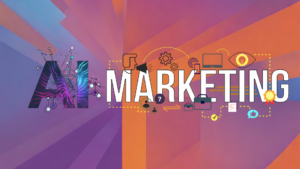Born as a trend within the computer world, Open Source software are used a lot in the daily life of all of us. Many people have already heard about it, but they are also used in an unconscious way even by those who do not know this type of software.
Companies have gained greater awareness. The adoption of Open Source is in fact constantly increasing, and the main result is that it increasingly plays a central role in the way businesses act.
Research conducted by OpenLogic and the Open Source Initiative (OSI) on the state of Open Source software in 2022 reveals that, last year, 77% of companies increased their use of Open Source software. Among the main advantages indicated by the companies interviewed: access to innovation, modernization and continuous improvement of company technologies, cost reduction, ability to find and solve bugs and malfunctions more easily, increased safety and risk reduction.
But let’s take a step back. What is an Open Source software?
The definition of Open Source
The term Open Source indicates the type of software whose source code is released with a specific license that makes it publicly accessible. Anyone can then see it, modify it and distribute it freely according to their needs.
Developed through a decentralized and collaborative approach, it is based on the reviews carried out by developers and IT professionals and the work of the community that uses the product. In this way, anyone can take a cue from the source code, copy it all or only partially and then use it in other applications.
In addition, the community can contribute to the project, finding any critical issues to be corrected or writing additional code that can possibly be integrated into the main project to update and improve it.
Unlike proprietary software, Open Source solutions are cheaper, more flexible and longer-lasting.
In summary, a software is considered Open Source if it is available for free in the form of source code, with the user then viewing the code of the software and modifying it according to their needs. The source code can then be reused in new software, so anyone can use it to create and distribute new programs.
Brief history of Open Source
Although the Open Source definition was coined in 1998 by some developers of the Free Software Foundation community, the idea of a free software was born between the seventies and eighties in university and research environments.
In those years, programs were usually exchanged within these communities, a bit like in the kitchen sharing their own recipes. This sharing led people from different universities or companies to read, edit or take inspiration from the source code of unknown programs they thought were interesting, and then use them in other applications.
In 1985, Richard Stallman founded the Free Software Foundation (FSF), a non-profit organization for the development, promotion and dissemination of free software in all areas of computing.
Initially the diffusion in the company was not a great success, because the term “free” was often associated with products of low quality. In addition, in the ’90s at the enterprise level there was still a wide diffusion of Closed Source software, whose license allows its use only in particular conditions and prevents modification, sharing or redistribution.
With the advent of the new millennium, things began to change: the big vendors, initially stuck on their own preferences for proprietary software, gradually began to embrace collaborative and cooperative attitudes, sponsoring more and more Open Source projects.
Two Forrester reports, the first in 2009 (“Open Source Software Goes Mainstream“) and the second in 2019 (“Unlock Open Source Technology’s Full Value“) certified the rise of Open Source software. The last in particular shows that 90% of companies now use at least two types of Open Source technologies, while 55% use even five or more.
Today there are many companies that base their strategic applications on Open environments as an alternative to Closed ones. The term “Open Source” now almost indicates a philosophy that celebrates open exchange, collective participation, transparency and meritocracy.
Using Open Source in the Enterprise
There are three main reasons why companies choose to focus on Open: innovation, savings and competitiveness. Within these three main categories, however, there are more specific advantages.
Red Hat’s latest annual report “The State of Enterprise Open Source” found that Open Source is primarily used to modernize IT infrastructure (64%), application development (54%) and digital transformation (53%).
For companies, Open Source is therefore a tool used to create flexible and innovative solutions, since it can be used in many operational areas. Here are some examples of the many Open Source software that are commonly used:
- Office suite as text editor, presentation, spreadsheet (Apache openoffice, libreoffice)
- Internet browser (Mozilla Firefox, Google Chrome, Opera Browser)
- eCommerce software (Magento, prestashop, WooCommerce)
- Image Editor (GIMP, Inkscape)
- Operating systems (Linux, Ubuntu)
At Klondike we are great supporters of Open Source, and for this reason we decided to make available the source code of some of our most requested algorithms (the result of more than a year of work). You can download our algorithms for free by going to the Klondike GitHub page by clicking here.
What is our goal? With our AI Open Source platform for CRM, ERP and eCommerce we want to create the foundation for an Open Source revolution.
In what way? By stimulating the sharing of ideas within communities, we aim to foster the birth of collaborations in order to improve and update our project. In this way, it will be possible to create new applications that will bring real and concrete benefits to companies.
Support us in our Open Source AI revolution by sharing and using our algorithms!








